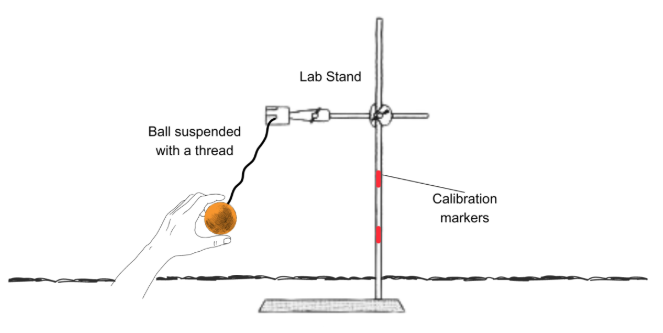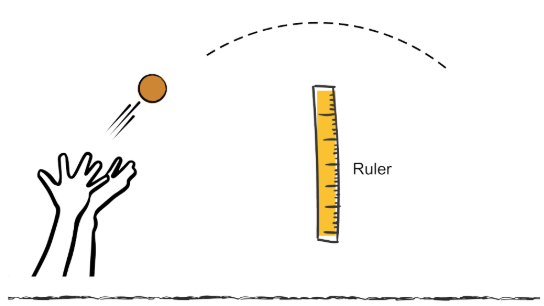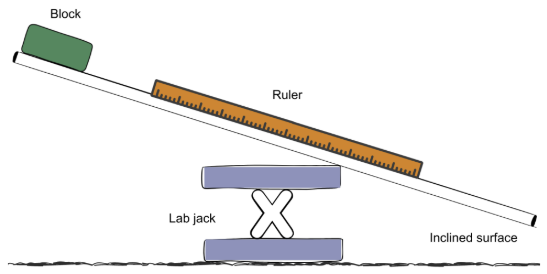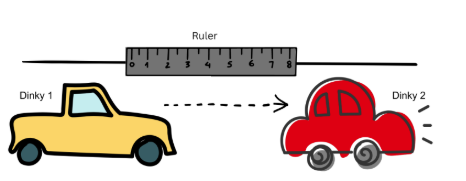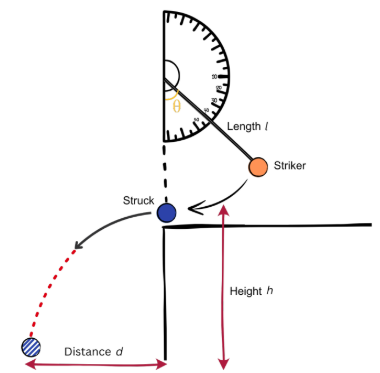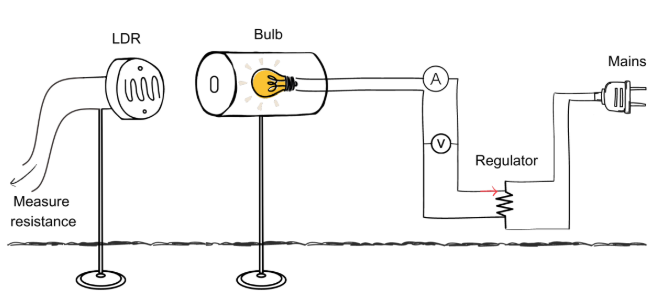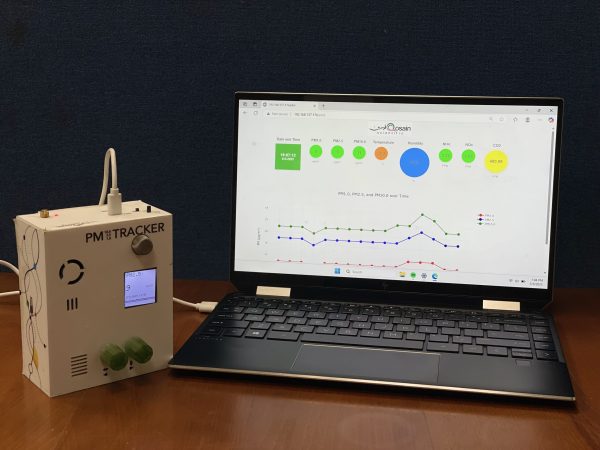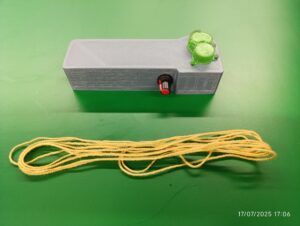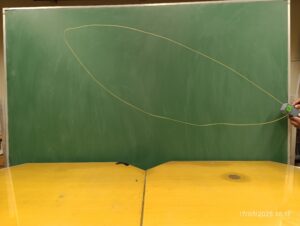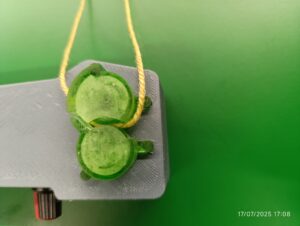KSS in collaboration with Qosain Scientific started this initiative of revitalizing the laboratories of Pakistan’s educational institutes, called the “Phenomenon Lab.” Originating from the Physlab, at LUMS, the Phenomenon labs aim to bring thought-provoking and inventive practical sciences to students across schools and colleges of Pakistan. This low-cost, open-source, and easily replicable experiments can be installed for grade 9th to 12th labs and can also be offered in university labs and as research projects (offering the potential of deep-level investigations).

Phenomenon Lab, powered by PhysLogger Technology, our homegrown data logging system, is an experimentational lab designed to understand natural processes. These labs cultivate observation and inquiry by engaging students with everyday natural phenomena. Even seemingly inconsequential phenomena, like a falling leaf or a flickering candle flame, embody the arcane mysteries of the universe. Through meticulous observation of the physical properties of a common light bulb, we can glean insights into the temperature and composition of the greatest stellar entity in our solar system, the Sun! Most of these experiments will revolve around observations, video recordings, graph plotting, and mathematical analysis.
Within Phenomenon Lab, Body Lab focuses specifically on the science of the living body, exploring bioelectric signals, rhythms, and physiological processes that bring life to motion.
Learning Outcomes
Two labs pilot have been successfully deployed in two schools, each equipped with the seven experiments incorporating both manual and hardware components and Markhor 3D Printers, enabling students to bring their creations to life.
- Instill scientific inquiry and engineering mindset
- Encourages interdisciplinary learning
- Enhances research & development skills
- Integrates hands-on learning with advanced concepts
- Expands access to practical science education nationwide
- Involves teacher training sessions around new technologies and concepts
- Training programs ensure seamless curriculum integration
What makes a swing swing? Dive into the physics of simple harmonic motion using a tennis ball, string, and data analysis tools.
It’s not just swinging—it’s physics in motion! Discover the science
Apparatus includes:
- Woolen thread
- Hook
- Ping Pong ball
- Lab stand
- Tape
- Recording apparatus
Have you ever wondered why a ball follows a curved path when you throw it? That smooth arc through the air isn’t random — it’s called a projectile motion. It happens because your throw gives the ball forward speed, while gravity constantly pulls it down. In this activity, we’ll record a ball in motion, analyze its position and velocity using graphs, and uncover the forces that shape this graceful arc through the air. Science behind everyday motion — made visible!
Ever wondered why balls fly in curves? Learn the science behind the arc
Let’s make sure we have everything we need to perform:
- A ruler (calibration reference)
- A ball
- Recording apparatus
From playground slides to wheelchair ramps and construction sites, ramps are everywhere — and they’re built with precision. But what happens when you change the height or angle? Do you still slide as smoothly? This exhibit explores the simple yet powerful physics behind inclined planes. By building a small-scale model in the lab, we’ll discover how angle, height, and surface affect motion — and how these principles make everyday life more accessible and efficient.
There’s more to a slide than fun — Learn how angles shape motion
Let’s make sure we have everything we need to make up a setup:
- Inclined surface
- Ruler
- A regular shaped object
- Lab Jack
- Recording apparatus
What really happens when things collide? From rubber balls bouncing off walls to toy cars crashing into each other, collisions are all around us. In an elastic collision, objects bounce off with little to no energy loss — like a football rebounding from a wall. In contrast, inelastic collisions involve squishing, sticking, or damage — like two toy cars that crumple together. Behind the crash is a powerful concept: momentum, the product of mass and velocity. This experiment puts the law of conservation of momentum to the test — helping us explore how motion and energy behave in real-life collisions.
Motion, impact, momentum — Dive into the science of collisions
Experiment Apparatus:
- Dinkies
- Ruler
- Recording apparatus
Energy is everywhere — powering our homes, growing our food, and even fueling our bodies — but it never vanishes. According to the law of conservation of energy, energy can’t be created or destroyed; it only changes form. From the nuclear fusion in the sun to the electricity in your kitchen, energy moves through a cycle of transformation. In this experiment, we explore how potential energy (from height) converts into kinetic energy (from motion) using a simple tabletop setup. A swinging ball hits a stationary one, launching it off the table. By calculating and predicting where it will land, we’ll see this fundamental law in action — and test whether our energy equations hold true.
Where does energy go? Follow its journey through motion and height
We often overlook the humble light bulb, but inside its glowing filament lies an incredible story of energy, temperature, and light. When electric current flows through the tungsten filament, it heats up to an astonishing 3000 K — making it one of the hottest objects you may ever encounter on Earth, nearly half the temperature of the sun’s surface! In this experiment, you’ll explore how voltage and current affect the bulb’s brightness, and use a light-dependent resistor (LDR) to measure light intensity. This hands-on investigation allows you to analyze real-world data, plot meaningful graphs, and understand the inverse relationship between light and resistance — helping you bridge the gap between textbook formulas and physical reality.
Light up your curiosity — Explore the science behind the glow
First, a look at the apparatus:
- LDR
- Bulb with covering
- Potential divider
- Mains
- Stands
Whether it’s raindrops clinging to a spiderweb or the magic of soap bubbles, surface tension is the invisible force shaping these everyday wonders. Surface tension pulls liquid molecules inward, creating droplets that form perfect spheres when suspended in air — a beautiful demonstration of nature’s drive to minimize energy. In this hands-on experiment, you’ll create and observe a pear-shaped droplet forming at the tip of a tube. Using simple tools like a pipette, ruler, and camera, you’ll estimate surface tension by analyzing the shape of the drop. It’s a gentle yet powerful way to explore the molecular forces shaping the world around us.
Discover the invisible tension holding every droplet together.
Let’s make sure we have everything we need:
- Lab stand
- Thin glass tube (pipette)
- Container with water
- Ruler
- A support for lifting the scale
- Dropper
Invisible to the eye but harmful to the lungs, particulate matter in the air is a growing concern, especially in urban environments like Lahore. This activity explores what we’re really breathing in, focusing on PM2.5, its sources, health effects, and the urgent need for cleaner living. It bridges science with faith, reminding us that protecting the environment is a moral and spiritual responsibility.
Discover how we monitor air quality, identify harmful particles, and help protect the environment and try it yourself through interactive, hands-on exploration.
What happens when you launch a limp, flexible string at high speed between two spinning wheels? Surprisingly it forms a stable, floating loop in mid-air, defying what your instincts might expect from something so floppy.
Welcome to the moving string, static shape experiment where everyday materials reveal extraordinary physics. This captivating setup brings to life the delicate dance between inertia, tension, and aerodynamic drag. As the string loops and hovers, it behaves more like a living spring than a passive thread. Through hands-on observation, image analysis, and MATLAB simulation, you’ll dive into the mechanics behind this strange phenomenon and uncover how invisible forces sculpt the loop into shape. Can you find the perfect drag coefficient to match your loop? Let’s find out.
The string bends, but the rules don’t — see how it works.
Follow the links to know about the experiment setup and working. You can get yours here.
What we will need:
- A smart phone/ any high quality camera
- ImageJ (calibration software)
- Automeris (data collection)
- MATLAB
- Ruler
- Analytical balance
Uncover how liquids, gases, and plasma behave in surprising ways. Through experiments on diffusion, Marangoni flows, and bursting, explore how particles move, interact, and create motion. Watch, analyze, and learn from real fluid phenomena one drop at a time.
Learn more.
- Retort stand with clamp
- Phone holder
- A smartphone / any high-quality camera
- Petri dish
- Ink / sunflower oil
- Water
- Isopropyl alcohol
- Food coloring / Methylene blue dye
- Dropper
- White paper
- Pencil
- Ruler
- Spare cloth
- Small beakers
- Vernier calipers
- Gloves

